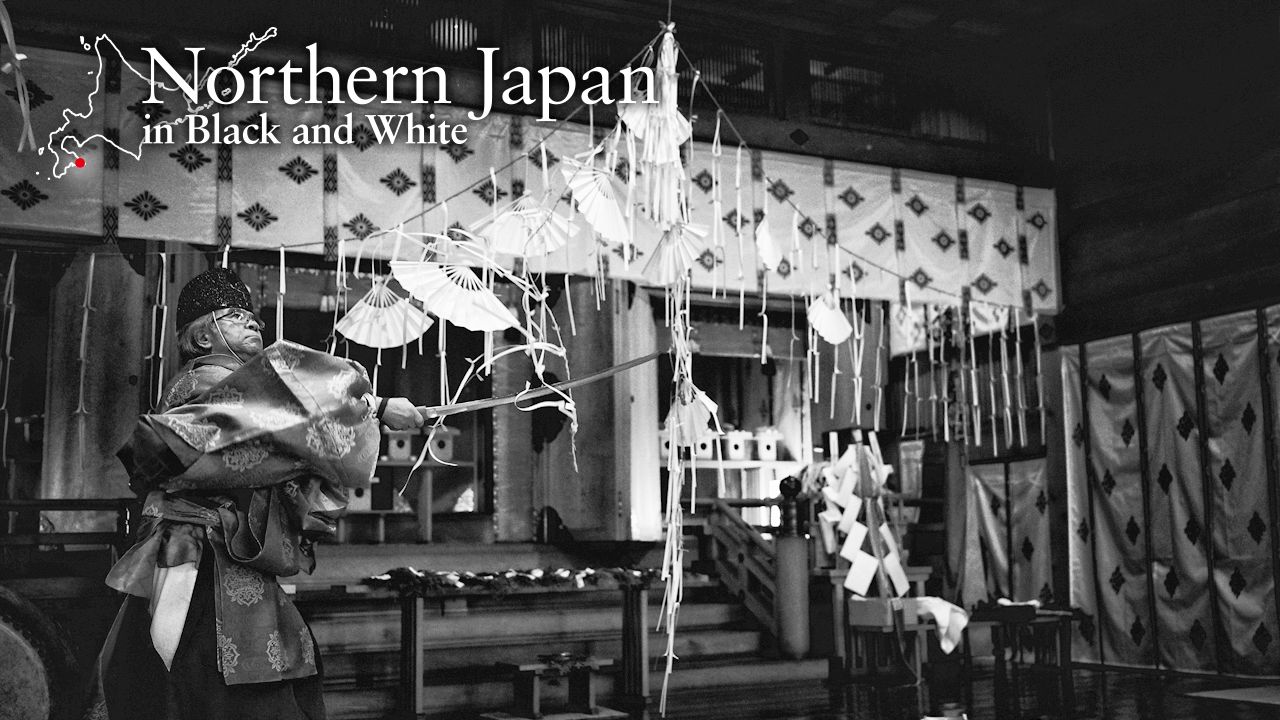
A Converted Priest, a Roaming Lord: Yamanoue Daijingū’s Annual Festival
Guideto Japan
Travel- English
- 日本語
- 简体字
- 繁體字
- Français
- Español
- العربية
- Русский
In the foothills of Mount Hakodate, at the head of the Saiwaizaka incline, stands the shrine Yamanoue Daijingū. The centerpiece of the annual Reitaisai festival here is the sacred Matsumae Kagura dance, in which the performer uses a real sword to cut down shime (strips of white paper) suspended from the ceiling. Given the history of those connected to the shrine, this seems appropriate enough.

The Reitaisai is the main annual festival at Yamanoue Daijingū.
In 1857, famed swordsman Sawabe Takuma came to Hakodate after a brief but turbulent stay in Edo. Takuma was a man of the Tosa domain and a relative of the celebrated Sakamoto Ryōma. In Hakodate, he married the daughter of the head priest of Yamanoue Daijingū and eventually inherited the position himself. But when he met the Orthodox priest who would later be canonized as Nicholas of Japan, his fate took an unexpected turn.
Sawabe was enraged by Nicholas’s presence in Hakodate, seeing him as an agent of a false doctrine who sought to make Japan a vassal state of Russia. He went to the priest fully intending to kill him, but Nicholas met him with a smile. “How can you say the doctrines of the Church are false if you do not know what they are? Slay me if you must, but at least let me explain the teachings of Christ first.” The warrior accepted Nicholas’s proposal and began to visit him regularly. He soon found himself so convinced by the priest’s dignity and teachings that he took baptism himself, eventually becoming one of the first Japanese Orthodox priests himself.

A scene from the Matsumae Kagura dance.
Matsudaira Sadaaki is another figure from the shogunate’s final years with a connection to Yamanoue Daijingū. In the late 1860s, Sadaaki was lord of the Kuwana domain and personal representative in Kyoto of the reigning shogun, Togukawa Yoshinobu. On Yoshinobu’s orders, he reluctantly fled the 1868 Battle of Toba-Fushimi, near Kyoto, for Edo, then continued to fight for the shōgun in Kashiwazaki and Aizu in the north. Just before the fall of Aizu Castle, he was again convinced to flee, this time by his older brother Katamori. He made his way farther north to Sendai, where he rendezvoused with Enomoto Takeaki’s fleet and hitched a ride across the strait to Hokkaidō. Thus did the tides of fate bring Sadaaki, too, to Hakodate.
Claiming the fortress of Goryōkaku, the displaced lord made Yamanoue Daijingū his base and mustered a company to continue his war. But just before the decisive battle in Hakodate, he abandoned Goryōkaku (this time on his own initiative). After the Meiji Restoration, his service to the shōgun was forgiven, and he became a priest of Tōshōgū Shrine in Nikkō.
Some say that the blade swung by the priest at Yamanoue Daijingū’s annual festival symbolizes the swordsmanship of Sawabe Takuma. Certainly, the sight of the dance must have spurred the roaming lord of Kuwana to reflect on the path that had brought him to Hakodate—and where life might take him in the future.
Yamanoue Daijingū
Access: 15 minutes on foot from the Hakodate-dokku-mae stop on the Hakodate City Tram
tourism Hokkaidō Hakodate photography shrine and temple Northern Japan in Black and White
